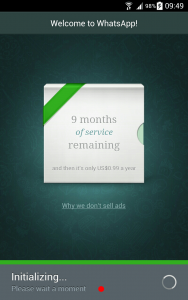Meet Li-Fi, the Breakthrough Technology That is 100 Times Faster ThanWi-Fi
What if I told you that every one of the billions of light bulbs around the world could be used as a wireless hotspot for your electronic devices? Oh, yeah, and that your data speed would be 1 gigabit per second (Gbps), or about 100 times faster than current Wi-Fi technology?
Meet Li-Fi, the potential successor to Wi-Fi.
Although it's already been in development for a few years, Li-Fi's getting more press since last week, when Estonian technology company Velmenni was able to use it to achieve speeds of 1 Gbps in real-world office and industrial environments, as opposed to inside a lab. Earlier this year, researchers at the University of Oxford achieved speeds of 224 Gpbs. (That speed would allow you to download 18 feature-length films in a single second.)
Who invented it?
German physicist Harald Haas, a professor at the University of Edinburgh, coined the term Li-Fi and first introduced the technology at the TED conference in Edinburgh back in 2011.
Haas went on to found pureLiFi, a company that has taken the lead in bringing this ground-breaking research to market. Haas serves as chief scientific officer, and he's been joined by a number of "visible light communication engineers." Their vision statement: "To be the world leader in Visible Light Communications technology enabling ubiquitous, high-speed, secure data networks wherever there is illumination."
To do that, Haas imagines a world in which LED light bulbs replace current wireless routers. As he explains in his talk, an LED bulb is a semiconductor, an electronic device whose intensity can be modulated at very high speeds. A standard television remote control uses an infrared LED to create a simple, low-speed data stream (about 10,000 to 20,000 bits per second). Or, as Haas points out, "not suitable for a YouTube video."
Li-Fi devices attempt to transmit not one data stream, but thousands of data streams in parallel, at higher speeds.
Beyond the obvious jump in speed, what other benefits could Li-Fi potentially bring?
Haas mentions three:
Efficiency: Li-Fi is data through illumination. You're already using bulbs to provide light, so if the same bulbs are used to transmit data, it comes without extra energy costs. (Haas says that the light must be on to transmit data, but it can be reduced to the point where it appears to be off and still work.)
Availability: Everywhere you see a light bulb--in your home or workplace, in an aircraft, on your smartphone--you are seeing a potential source for high-speed data transmission.
Security: Since light doesn't penetrate walls, transferred data is more secure. It's available only to users in the same room.
Since the technology is in development, there are a number of downsides that limit use. For now, Li-Fi does not work outdoors. Light pollution may also present problems.
But Haas embraces these challenges. He envisions a world where LED lights could replace the large, ugly radio frequency antennas we see today; where those lights could be used for traffic control and to provide communication between cars to prevent accidents; and where millions of street lamps across the world could be used as free data access points.
Is it anything more than a dream? We may find out soon enough.



Comments
Post a Comment